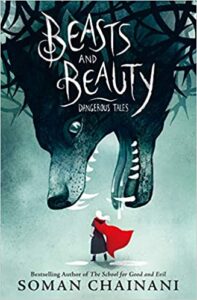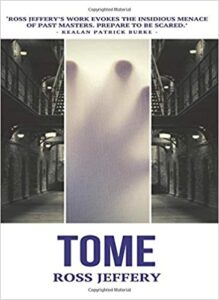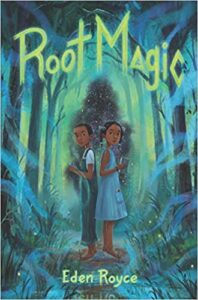Beasts and Beauty: Dangerous Tales by Soman Chainani, illustrated by Julia Iredale
HarperCollins Children’s Books, 2021
ISBN-13 : 978-0062652638
Available: Hardcover, Kindle edition, audiobook ( Bookshop.org | Amazon.com )
In Beasts and Beauty: Dangerous Tales, Soman Chainani brings us tales so sharp they cut, with teen protagonists who seize their agency, and subversive, unexpected re-visionings of 12 familiar stories.
The standout story in this collection for me is “Bluebeard”, a lush and bleeding horror story. Chainani has altered the story so that instead of courting a wife, Bluebeard chooses boys from an orphanage as his victims. Unfortunately for him, one boy, Pietro, is wise to what’s going on.
“Bluebeard” is just one of many excellent stories. Chainani’s version of “Red Riding Hood” would do Shirley Jackson proud, with its rejection of conformity and tradition. “Hansel and Gretel” set in India, is very different from the original tale, although you can clearly see its roots. This was a beautifully done variation with a very satisfying ending, if you’ve ever wanted the stepmother to get her comeuppance. “Cinderella” is an entertaining story where a girl in love with the prince, who has been hexed into a mouse, convinces Cinderella to go to the ball and take her along. The story definitely does not go where you think it will! “Snow White” takes on racism with an unusual reversal, and disrupts the structure of fairytale narrative. “Beauty and the Beast” also addresses racism and classism in its commentary on seeing past appearances, with a prickly, bookish, Chinese “Beauty”. “Sleeping Beauty” is genderswapped, with lyrical, gorgeous writing threaded with horror. The relationships in this were particularly troubling as Chainani was not clear on the issue of consent or its lack that is central to Sleeping Beauty stories.
Chainani does a good job taking a traditional tale and giving it just a little bit of a twist, as well. Rapunzel uses her brain instead of her hair to get what she wants; Jack grows a beanstalk hoping to find his missing father at the top; the sea witch lectures the Little Mermaid on the folly of giving up a long life and self-respect for the possibility of love. Other stories include “Rumplestiltskin” and “Peter Pan”. Overall, it’s a great collection that pays a creative homage to traditional stories. Art by Julia Iredale throughout, including full-page color illustrations, complements the stories perfectly as it’s integrated into the design of the book.
Teens who grew up reading Adam Gidwitz, the Sisters Grimm, or Chainani’s School for Good and Evil series, or who enjoy fairytale adaptations such as those by Anna-Marie Macklemore (Blanca & Roja) Emily Whitten (For The Wolf) and Emma Donoghue (Kissing the Witch) should enjoy this collection. Highly recommended for ages 10+.







Follow Us!